
Itinerary
Day 101.10.2024Tuesday
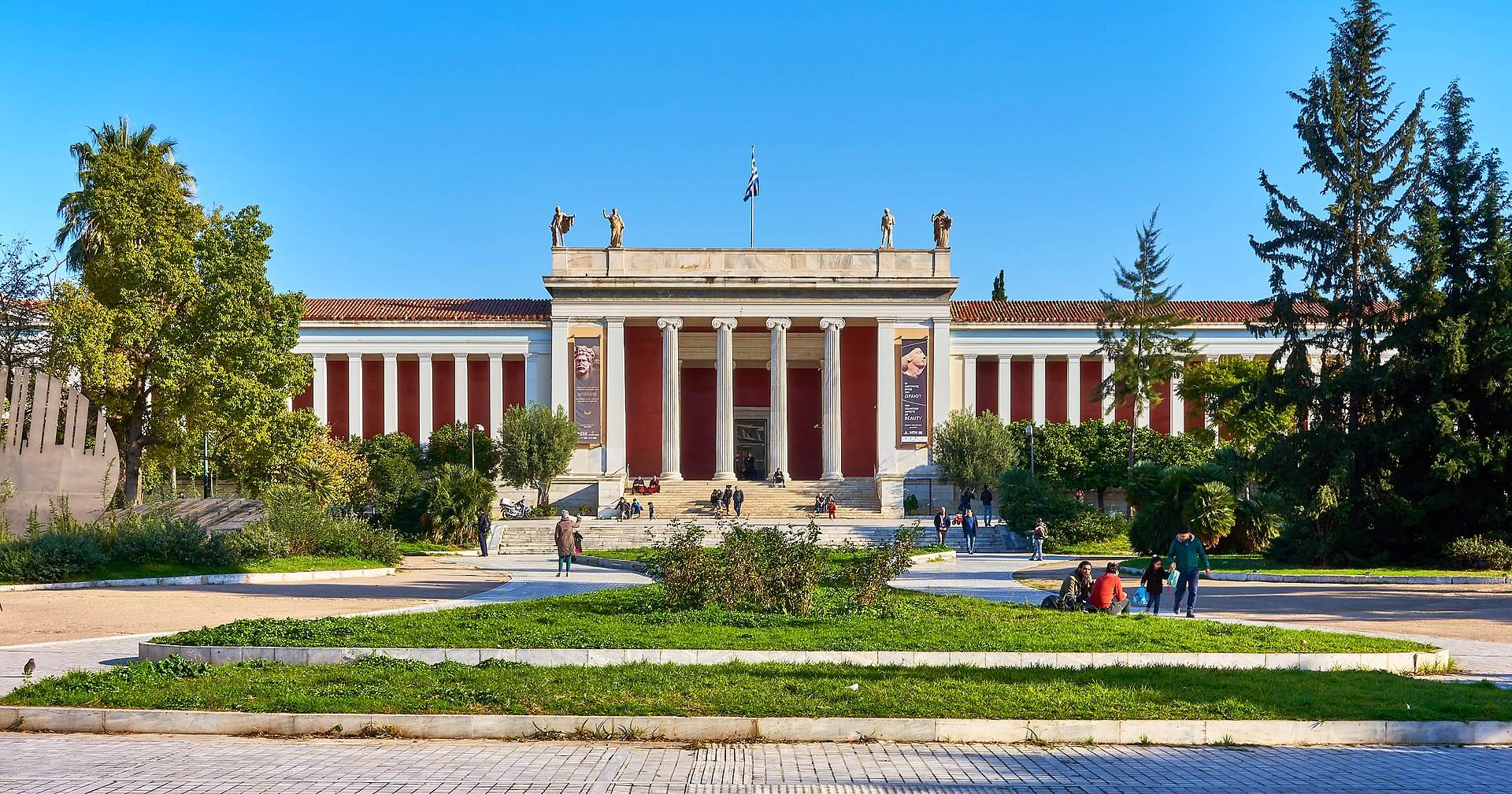
National Archaeology Museum
The largest archaeological museum in Greece. The museum is housed in an impressive Neoclassical building with 8,000 square meters of exhibition space. On display are five permanent collections with more than 11,000 exhibits, offering a comprehensive overview of Greek civilization from prehistory through the classical period to late antiquity.
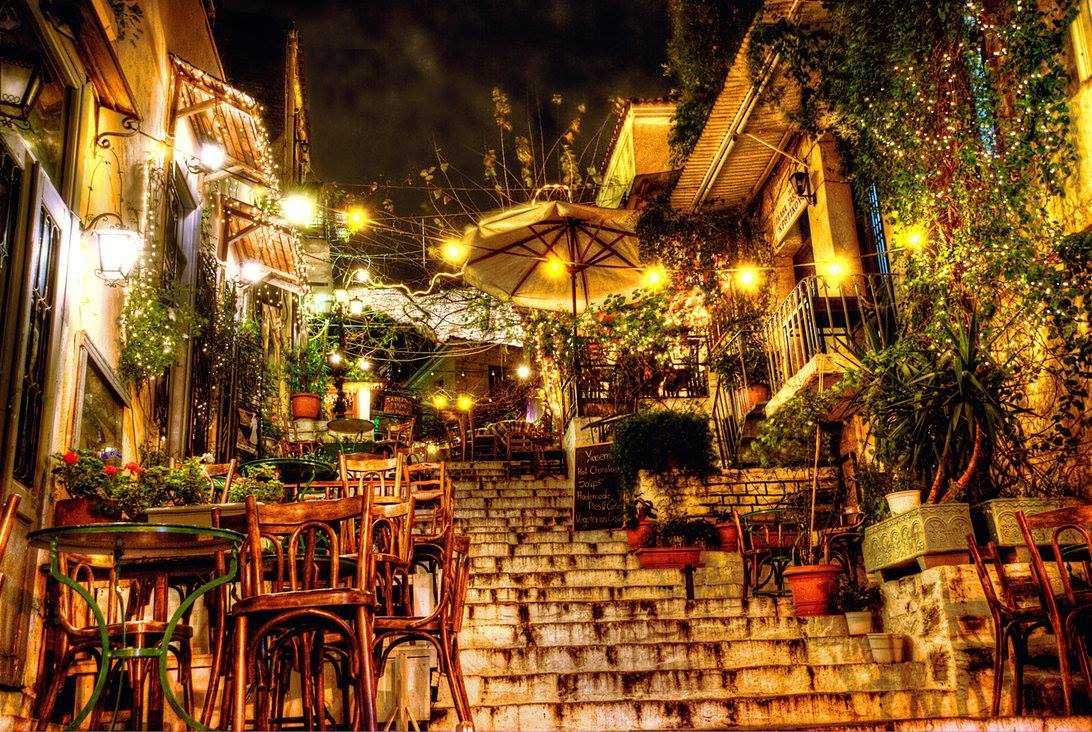
Mnisikleous Street Stairs
If you are looking for things to do at night in Athens, head over to the Mnisikleous Street stairs. Restaurants line this set of stairs on the top end of Mnisikleous Street, drawing a crowd in the evenings. The restaurants vary in quality, although some are quite good, but the atmosphere here is hard to beat. It's extremely casual and relaxed.
2 Places
Day 202.10.2024Wednesday

Syntagma Square
Syntagma Square is the central square of Athens. The square is named after the Constitution that Otto, the first King of Greece, was obliged to grant after a popular and military uprising on 3 September 1843. It is located in front of the 19th century Old Royal Palace, housing the Greek Parliament since 1934. Syntagma Square is the most important square of modern Athens from both a historical and social point of view, at the heart of commercial activity and Greek politics. Every day at 11 am, there is an elaborate changing of the guards ceremony that takes place out the front of the Parliament building and the tomb of the unmarked soldier. You should definetely watch this. This ceremony, which is held every day, is performed more magnificently on Sundays. This ceremony is a totally free activity. Additionally, Foreign visitors can visit the Hellenic Parliament for free. English-language guided tours are held every Friday and Monday at 3:00 PM during the months of June, July, and September.

Athens National Garden
Big historic park with native & exotic plants, plus archeological remains & a children's library.
Zappeion
If you have had enough sun during your day of sightseeing, this is a quiet, shady place to relax and cool off. Inviting trails lead through tall trees and offer a reprieve from the busy streets. It's also a free attraction in Athens. On the edge of the garden is the Zappeion Hall, which you can enter for a peek inside if it is not in use. It was built in the 1870s and is used for events. Inside the main entrance is an impressive round, open-air hall, lined by columns.
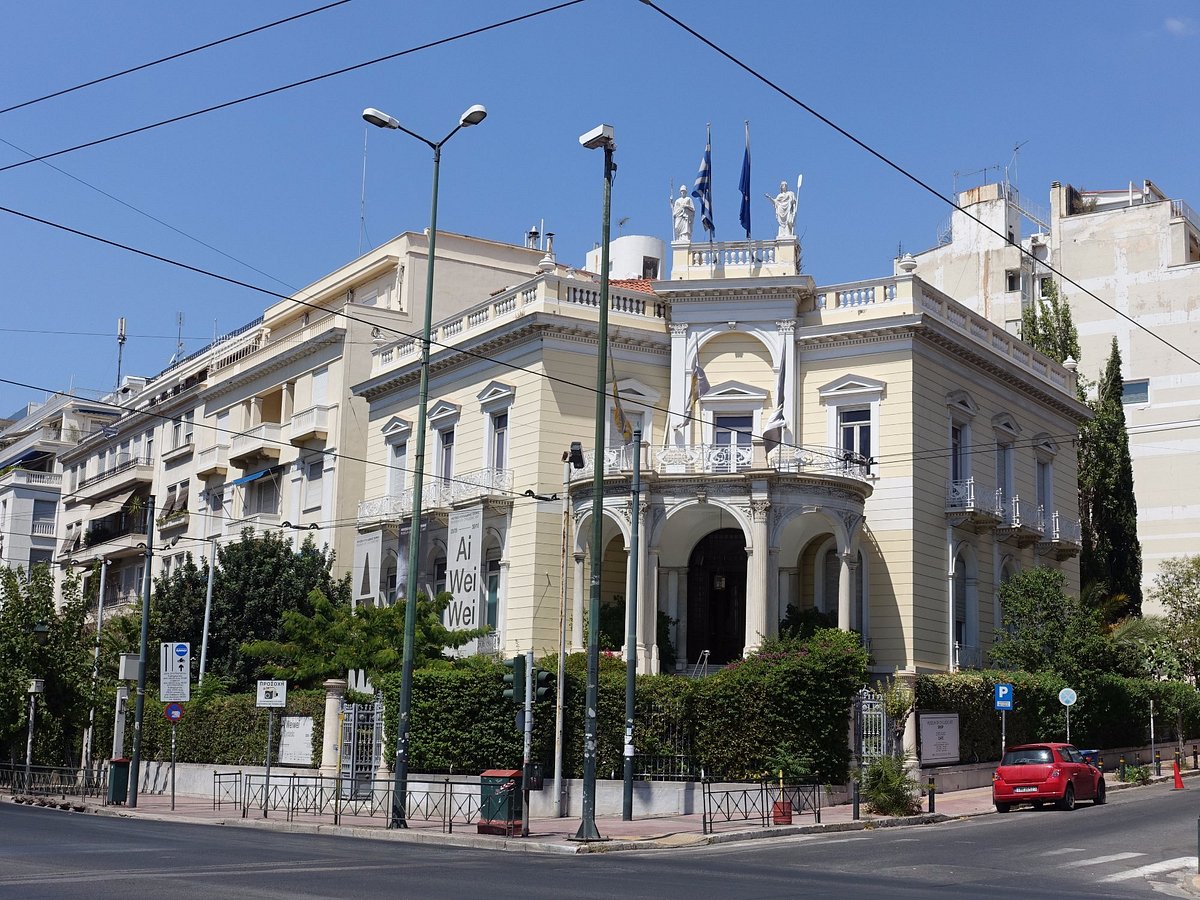
Museum of Cycladic Art
Goulandris' own collection forms the core of the museum's exhibit. In the Kolonáki quarter, the Museum of Cycladic Art was created in 1986 by the Nicholas and Dolly Goulandris Foundation. The shipowner Nikolas P. Goulandris was a well-known patron of the arts and cultural life in Athens.
Byzantine Museum
Fascinating insights into the Byzantine period of Greek history. Housed in a 19th-century palace originally built for the Duchesse de Plaisance, the wife of Charles-François Lebrun of France, the museum displays a precious collection of Byzantine art. The Byzantine Empire was the inheritance of the eastern half of the Roman Empire after it fell.

Panathenaic Stadium
Ancient Athens's largest building. the Panathenaic Stadium, has a capacity for 60,000 spectators. Constructed around 335 BC during the era of Herodes Atticus, the venue hosted the Panathenaic Games where runners competed in races around the track. The 204-meter-long track was designed with four double herms, where runners would turn in the races.

Lycabettus Hill
The view from the top of Lycabettus Hill is the best in Athens. As you stand on and gaze out over Athens from the Acropolis, you may wonder what the hill in the distance is. That would be Lycabettus Hill, and it's well worth a visit.
7 Places
Day 303.10.2024Thursday

Acropolis
The Acropolis of Athens is an ancient citadel located on a rocky outcrop above the city of Athens and contains the remains of several ancient buildings of great architectural and historical significance, the most famous being the Parthenon. Early morning on any weekday in the months between October and April is the best time to visit Acropolis. The term acropolis is generic and there are many other acropoleis in Greece. During ancient times it was known also more properly as Cecropia, after the legendary serpent-man, Cecrops, the supposed first Athenian king. While there is evidence that the hill was inhabited as far back as the fourth millennium BC, it was Pericles in the fifth century BC who coordinated the construction of the site's most important present remains including the Parthenon, the Propylaea, the Erechtheion and the Temple of Athena Nike.
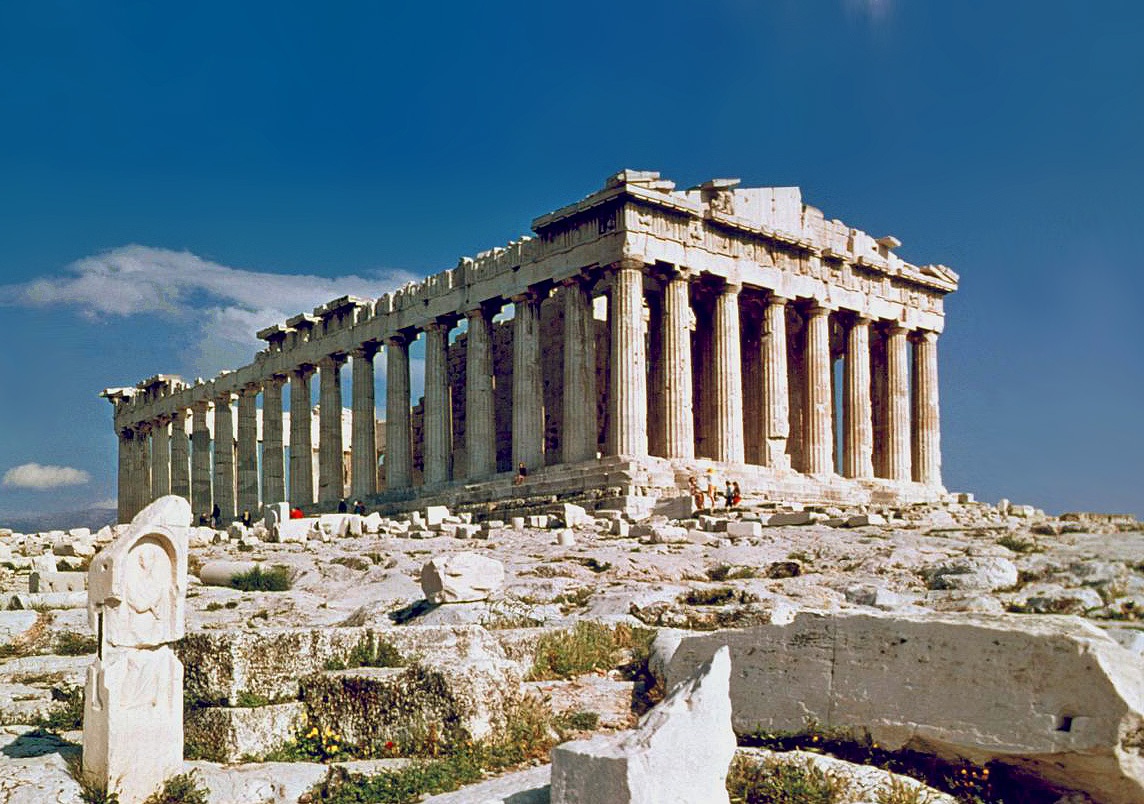
Parthenon
The majestic ruins of an ancient Greek building, known for its dignified white marble columns and perfect sense of proportion. It was completed in 438 BC, although decoration of the building continued until 432 BC. It is the most important surviving building of Classical Greece, generally considered the zenith of the Doric order. Its decorative sculptures are considered some of the high points of Greek art. The Parthenon is regarded as an enduring symbol of Ancient Greece, Democracy and Western civilization, and one of the world's greatest cultural monuments. To the Athenians who built it, the Parthenon, and other Periclean monuments of the Acropolis, were seen fundamentally as a celebration of Hellenic victory over the Persian invaders and as a thanksgiving to the gods for that victory.

Erechtheion
The Erechtheion is an ancient Greek temple on the north side of the Acropolis of Athens in Greece which was dedicated to both Athena and Poseidon. The second largest temple on the Acropolis has a complex and unique structure, including its famous Porch of the Caraytis with statues of six graceful maidens on the south side and a four-pillared porch with six Ionic columns on the north side.

Acropolis of Athens
Ruins of iconic 5th-century B.C. temple complex on Athens' rocky hilltop undergoing restoration.
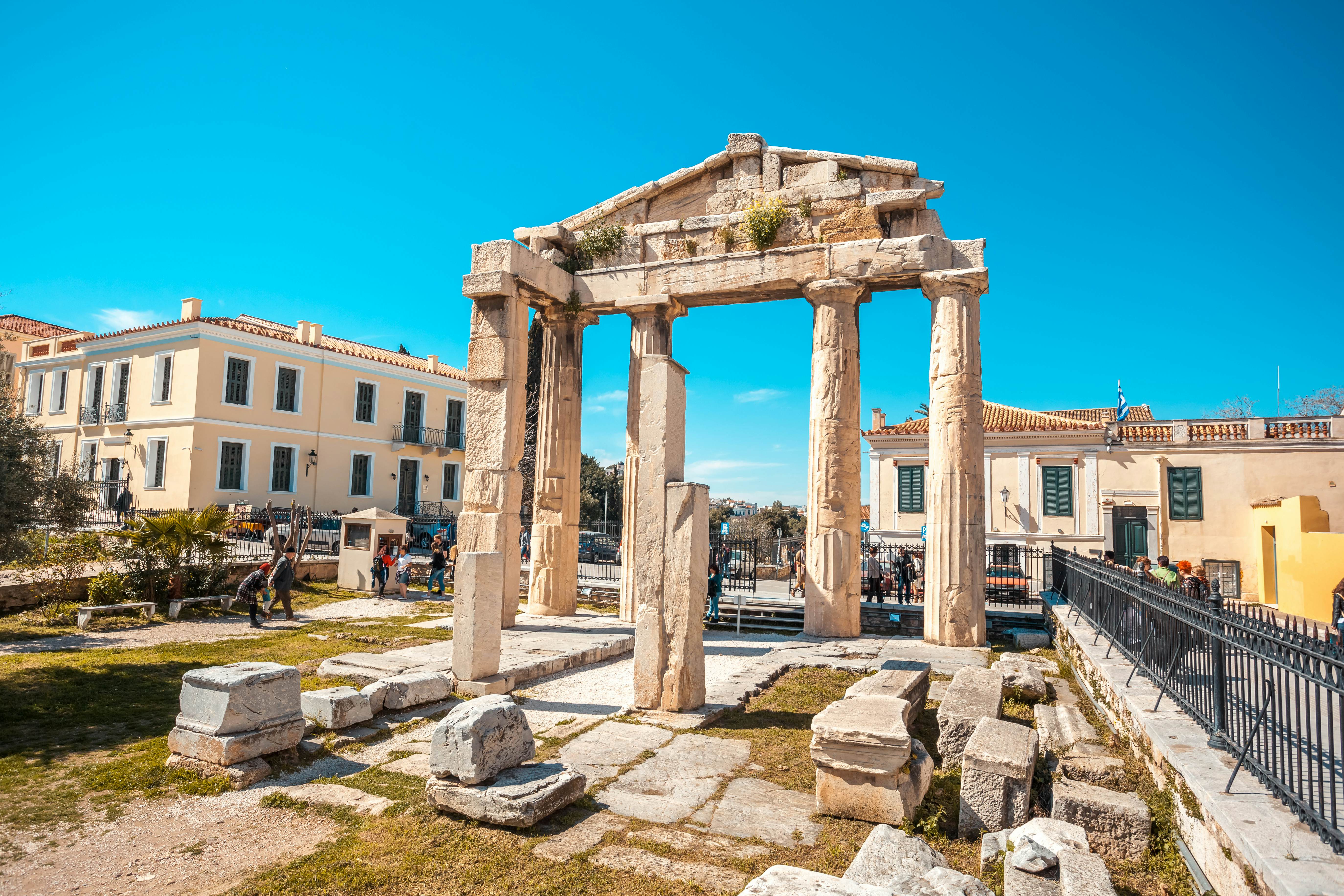
Roman Agora
Adjacent to the Ancient Agora is the site of the Roman Agora. While it may all seem like one site, these buildings were constructed later, and construction eventually moved on to the site of the Ancient Agora. One of the easily recognizable sites here is the Tower of the Winds.
Pláka
Charming village ambience. Between the northern slopes of the Acropolis and Ermoú Street, the picturesque Pláka neighborhood is a tourist hot spot. Narrow pedestrian streets and the cheerful little squares of the Pláka quarter are lined with lovely bougainvillea-trimmed pastel-painted houses, restaurants, and shops.
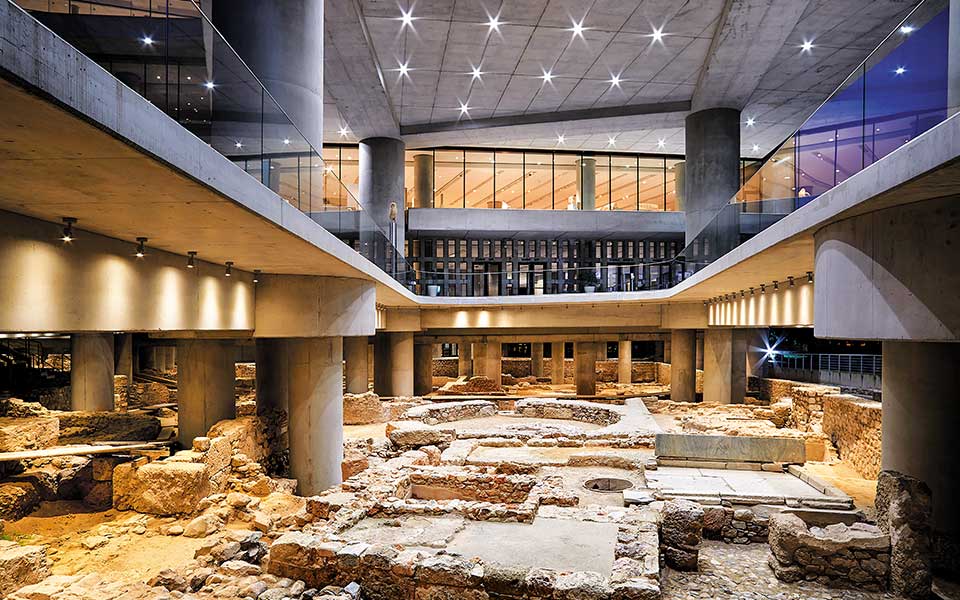
Acropolis Museum
One of the most valuable collections of ancient Greek art in the world. The new facility was completed in 2007, below the Acropolis hilltop, and replaced the former museum on the hill. This huge facility 25,000 square meters, and features 14,000 square meters of exhibition space. The unique layout incorporates an ancient Athenian neighborhood.

Hadrian's Library
Hadrian's Library, founded by Emperor Hadrian in AD 132. Even later, during Byzantine times, three churches were built near the site of the library. You can see one wall of Hadrian's Library and ruins of the Roman Agora from the street, but if you want to explore further, you can buy a ticket and walk through the ruins.

Stoa of Attalos
Rebuilt ancient structure once a gathering place & market, now a museum housing Athenian artifacts.

Ancient Agora of Athens
These ruins, located in the heart of modern Athens, were once the site of the marketplace in ancient times, a political, cultural and economic center of the ancient world. Agora was the place that Socrates was sentenced to death. Additionally, The most well-preserved Temple in Greece is found at the Ancient Agora

Ancient Agora of Athens
Famous landmark featuring the ruins of an ancient Greek gathering place & a museum with artifacts.

Holy Metropolitan Church of the Annunciation to the Virgin Mary
1800s cathedral church of Athens, featuring monumental Greco-Byzantine & neoclassical architecture.
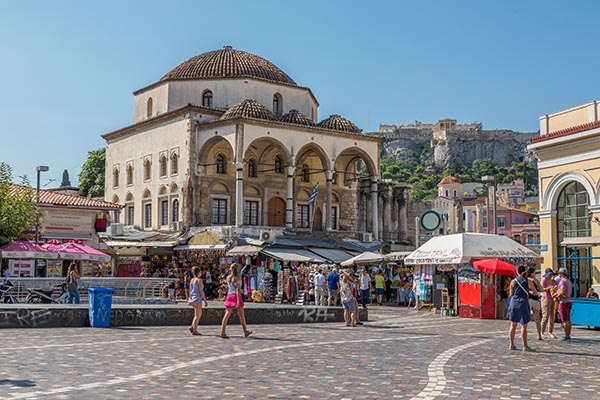
Monastiraki
Narrow streets lined with shops selling everything from jewelry. Trinkets to clothing and everyday goods is what you'll find in the Athens Flea Market in Monastiraki. This is one of the neighborhood's main draws, but this area has a very unique vibe and is a nice place to just relax at an outdoor patio or wander about.

Temple of Olympian Zeus
This half-ruined temple is dedicated to Zeus, the chief of the Olympian Gods, and that is how it took its name, the temple of the Olympian Zeus. Construction began in the 6th century BC during the rule of the Athenian tyrants, who envisaged building the greatest temple in the ancient world, but it was not completed until the reign of the Roman Emperor Hadrian in the 2nd century AD, 638 years after the project had begun. During the Roman period the temple, which included 104 colossal columns, was renowned as the largest temple in Greece and housed one of the largest cult statues in the ancient world.
14 Places
